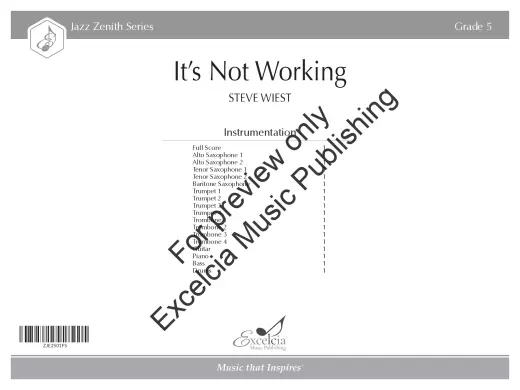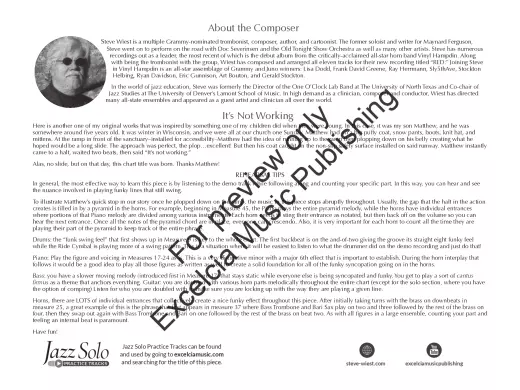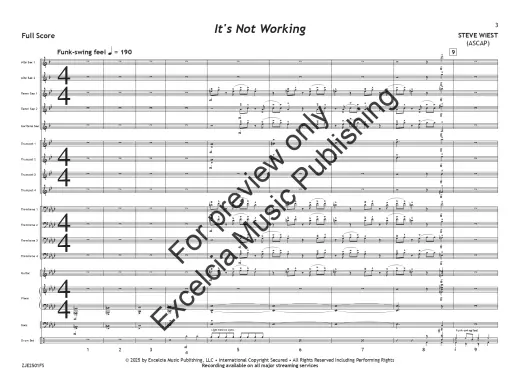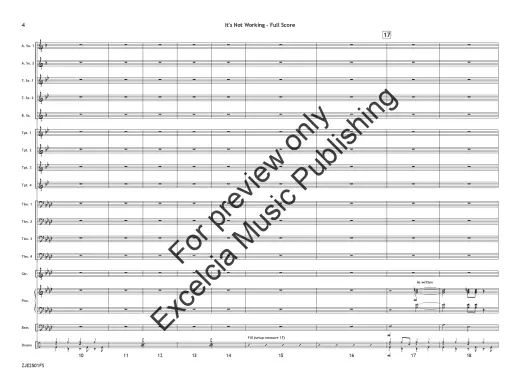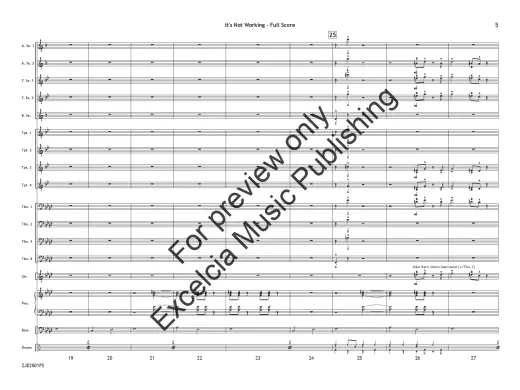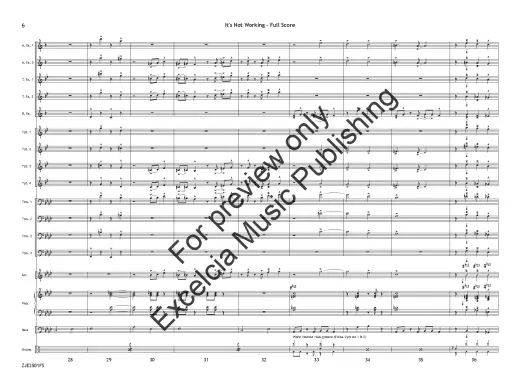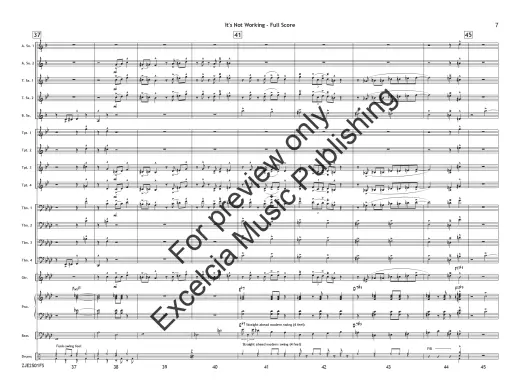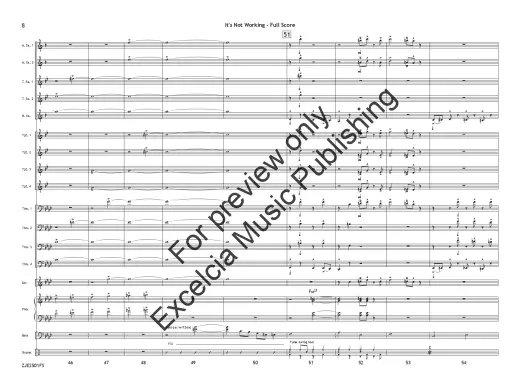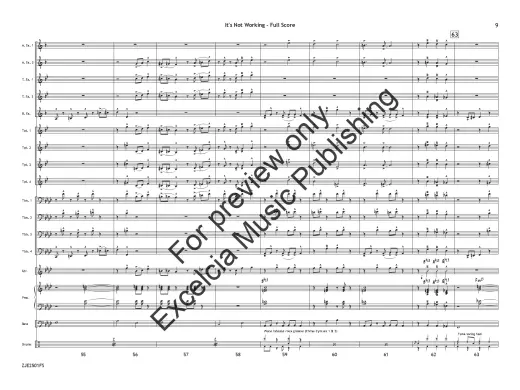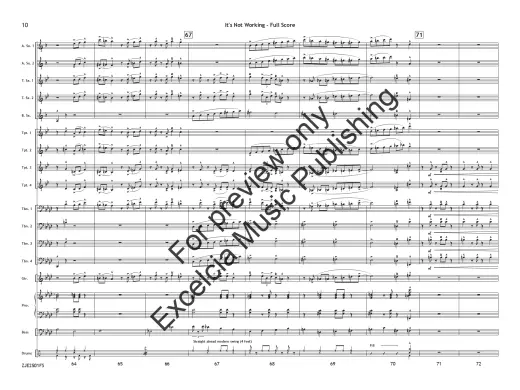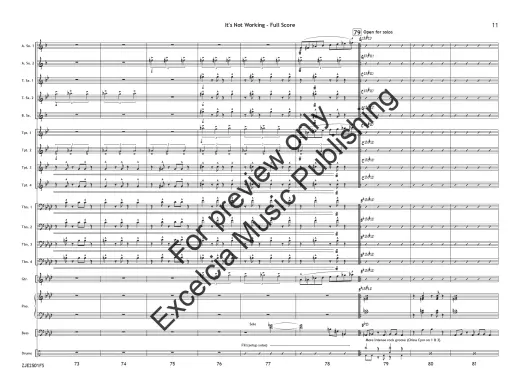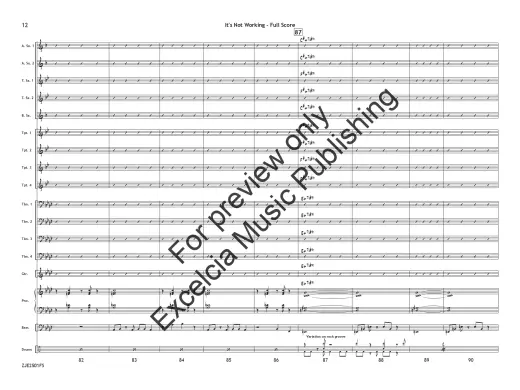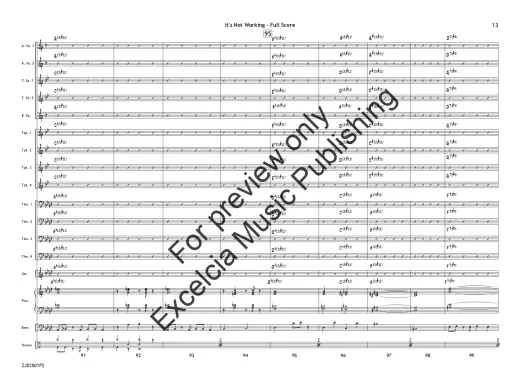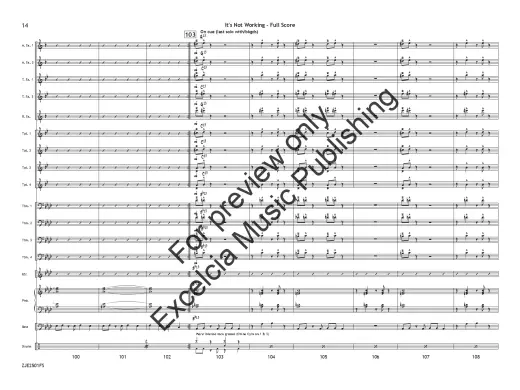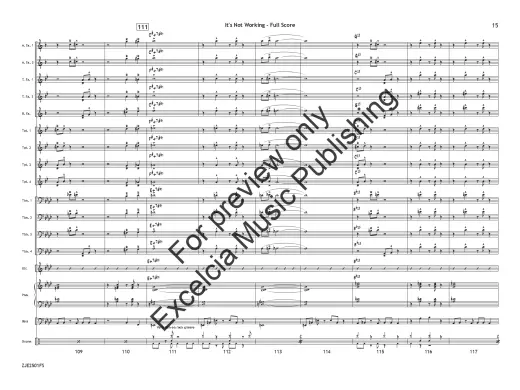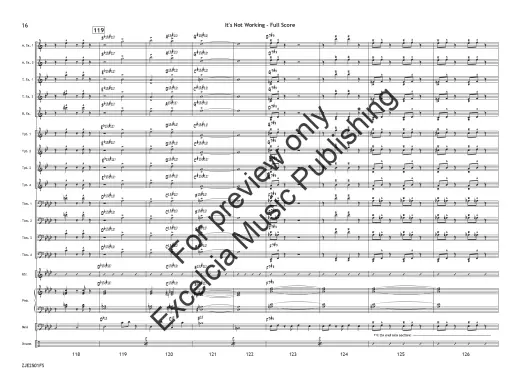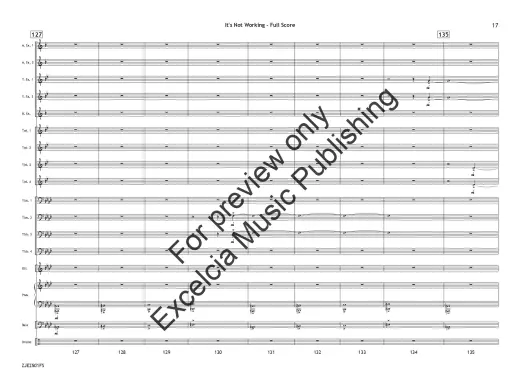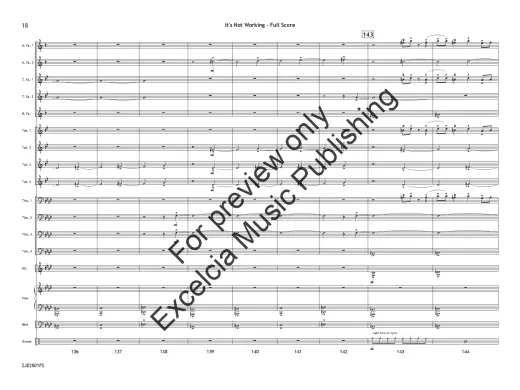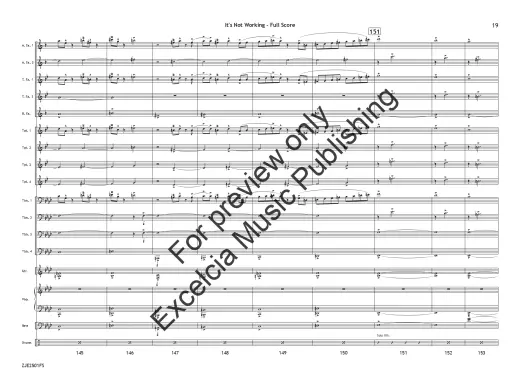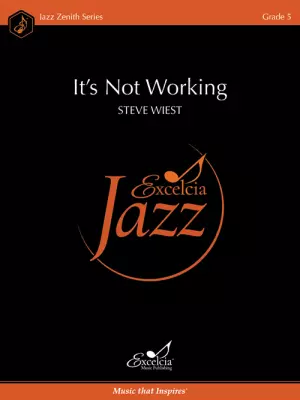Excelcia Music Publishing Itís Not Working - Wiest - Jazz Ensemble - Gr. 5

Additional Photos:
Product Videos :

Great Additions
Description
- Composer/Author: WIEST, STEVE
- Instrumentation: JAZZ ENSEMBLE
- Genre: SWING
- Grade/Level: 5.0
- Model # ZJE2501
Format: Score and Parts
Instrumentation: Jazz Ensemble
Grade: 5
If you have the horses, this new Steve Wiest opus is well worth the effort. Ideal for upper-level groups to use at contests or festivals, this chart is a workout for the whole band. The solo section is very flexible and is open for any player. Hold on to your hatsthis is a wild ride!
Here is another one of my original works that was inspired by something one of my children did when they were young. In this case, it was my son Matthew, and he was somewhere around five years old. It was winter in Wisconsin, and we were all at our church one Sunday. Matthew had on a big puffy coat, snow pants, boots, knit hat, and mittens. At the ramp in front of the sanctuaryinstalled for accessibilityMatthew had the idea of running up to the ramp then plopping down on his belly creating what he hoped would be a long slide. The approach was perfect, the plop... excellent! But then his coat caught on the non-slip safety surface installed on said runway. Matthew instantly came to a halt, waited two beats, then said It's not working.
Alas, no slide, but on that day, this chart title was born. Thanks Matthew!
Rehearsal Tips
In general, the most effective way to learn this piece is by listening to the demo track while following along and counting your specific part. In this way, you can hear and see the nuance involved in playing funky lines that still swing.
To illustrate Matthew's quick stop in our story once he plopped down on the ramp, the music in this piece stops abruptly throughout. Usually, the gap that the halt in the action creates is filled in by a pyramid in the horns. For example, beginning in Measure 45, the Piano plays the entire pyramid melody, while the horns have individual entrances where portions of that Piano melody are divided among various instruments. Each horn needs to sting their entrance as notated, but then back off on the volume so you can hear the next entrance. Once all the notes of the pyramid chord are in place, everyone can crescendo. Also, it is very important for each horn to count all the time they are playing their part of the pyramid to keep track of the entire phrase.
Drums: the "funk swing feel" that first shows up in Measure 9 is key to the whole chart. The first backbeat is on the and-of-two giving the groove its straight eight funky feel while the Ride Cymbal is playing more of a swing pattern. This is a situation where it will be easiest to listen to what the drummer did on the demo recording and just do that!
Piano: Play the figure and voicing in Measures 17-24 as-is. This is a very distinctive minor with a major 6th effect that is important to establish. During the horn interplay that follows it would be a good idea to play all those figures as written as well to create a solid foundation for all of the funky syncopation going on in the horns.
Bass: you have a slower moving melody (introduced first in Measure 17) that stays static while everyone else is being syncopated and funky. You get to play a sort of cantus firmus as a theme that anchors everything. Guitar: you are doubled with various horn parts melodically throughout the entire chart (except for the solo section, where you have the option of comping) Listen for who you are doubled with to make sure you are locking up with the way they are playing a given line.
Horns, there are LOTS of individual entrances that collectively create a nice funky effect throughout this piece. After initially taking turns with the brass on downbeats in measure 25, a great example of this is the phrase that first appears in measure 37 where Bass Trombone and Bari Sax play on two and three followed by the rest of the brass on four, then they swap out again with Bass Trombone and Bari on one followed by the rest of the brass on beat two. As with all figures in a large ensemble, counting your part and feeling an internal beat is paramount.
Have fun!
Media
Itís Not Working
Press play to listen


